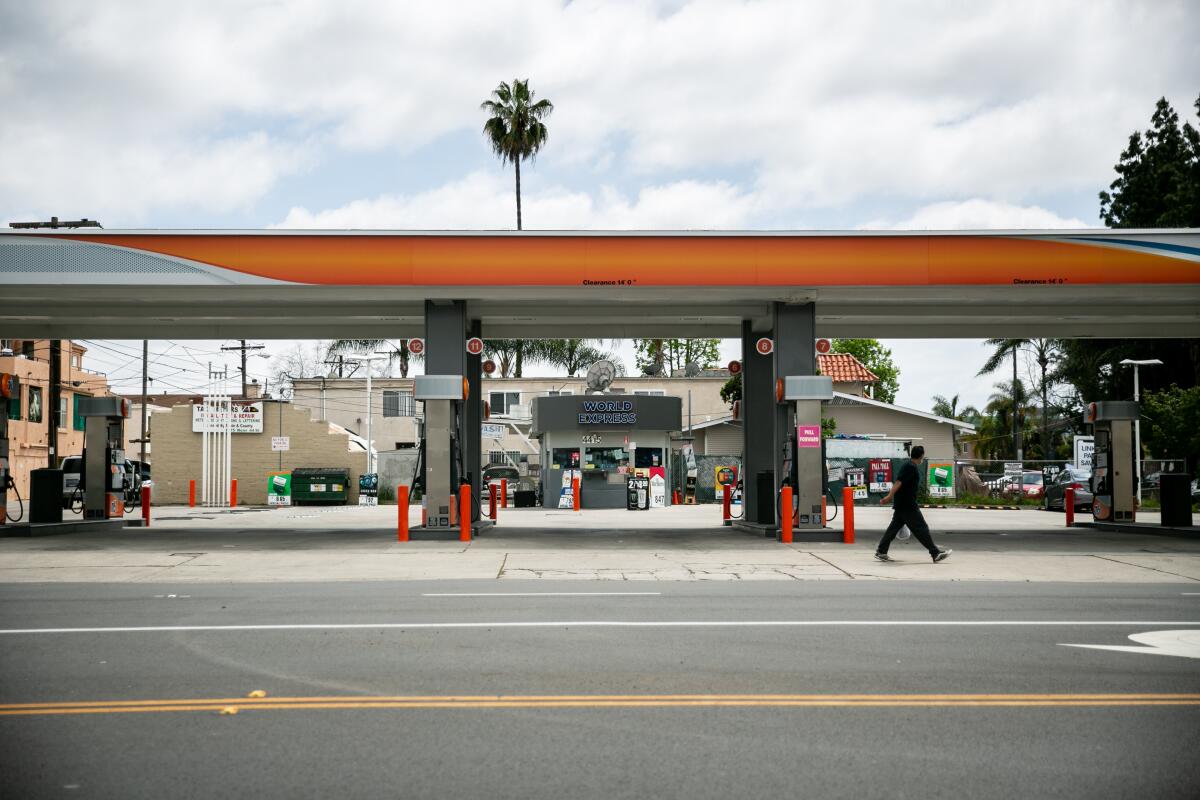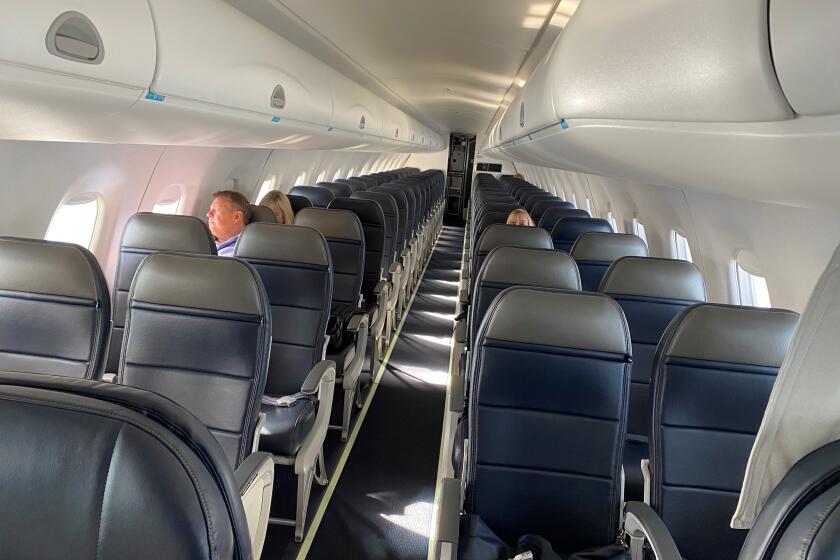The future of oil demand is being reshaped by coronavirus lockdowns

Richie Merzian is still thinking about oil a lot in his professional capacity, but these days he’s using much less of it.
The Australian energy and climate change researcher used to drive daily to his office and his kids’ daycare, while occasionally flying to international conferences. Now he works from his home in suburban Canberra and makes presentations to large investors online from his living room.
These radical changes in mobility are being repeated globally, a shift that socked oil demand and caused a historic price collapse gutting companies and government balance sheets. What’s less clear, and of great importance to researchers like Merzian as well as oil traders, investors and executives, is which of these extreme shifts in work, travel and commerce may permanently alter consumption.
“I don’t even carry keys around in my pocket anymore, because I don’t ever need to jump in the car,” Merzian said. “We’ve shifted the norm. You can’t push things this far along and expect them to snap back.”
Government efforts to keep people at home and slow the spread of COVID-19 have wiped out more than 30% of global oil demand. Excess crude is filling up storage tanks so fast that it drove U.S. oil futures into negative prices for the first time ever on Monday.
There’s no consensus on how fast demand will recover. Some analysts, including at consultant Wood Mackenzie Ltd. and bank Citigroup Inc., see a rebound as early as next year that will push consumption beyond 2019’s record levels.
Others see a slower pace. Eurasia Group, for instance, expects the recovery to be years away when the effects of the virus are combined with increased spending on clean energy from some leading economies. Even before the current crisis, many — including leaders of some of the world’s biggest oil companies — expected demand to peak in the next decade.
One thing is clear: As transport and petrochemicals make up more than half of total oil use, how these new attitudes and behaviors stick will play an important role in shaping the future of the crude market.
“People are adapting to a more local existence and living off more sustainable activities,” said Damien Courvalin, an analyst at Goldman Sachs Group Inc. They’re “consuming less globally produced fresh food, producing less waste with a more conservative approach to consumption, all of which may have lasting impacts on demand.”
With the world months from beginning to recover some semblance of normalcy, it’s too early to tell for sure what a post-virus world will look like. Still, these are some of the areas experts will be watching for signs of long-term effects:
Air travel
Goldman’s Courvalin estimates that commuting and air travel account for 16 million barrels a day of global oil demand, which “may never return to their prior levels.”
Business travel is likely to be among the hardest hit sectors. Companies will be keen to keep travel budgets lean after learning just how much business can be done successfully by video conference.
Airline passenger volume is down 95%. So who is in that remaining 5%?
For some people, it will take years before they’re comfortable sitting in a cramped space with strangers. And for jet-setters who can’t wait to travel again, international flight restrictions and quarantines likely will last much longer than local lockdowns.
“People will continue to stay close to home. Countries will not open up again so easily,” said Vincent Elbhar, co-founder and strategic advisor at Switzerland-based GZC Investment Management. “It’s not just a crisis and then we move on to business as usual. This, for me, is a lasting phenomenon.”
Public transportation
When it comes to gasoline, there are two shifts pulling in opposite directions.
On the one hand, public transportation is taking a beating because of social distancing. Commuters will instead opt for more isolated forms of transport, including private cars, which will require more fuel to move the same number of people.
The numbers are telling from China, the biggest oil consumer after the U.S. and the first country recovering from lockdowns.
About 50 million fewer people are riding intercity buses now than in mid-January, according to BloombergNEF. Meanwhile, the number of vehicles on the country’s highways has soared to several million more daily than at the same time last year.
“After such an external disruption, what will happen is people will avoid public transportation and have an increased reliance on cars,” said Cuneyt Kazokoglu, a London-based oil analyst for consultancy FGE. “That will elevate gasoline demand.”
Meanwhile, efforts to break the spread of the coronavirus are forcing the business world to undergo a global work-from-home experiment. Some fraction of companies and people may decide that such arrangements are preferable and will continue on a semipermanent basis.
In car-crazy cities such as Los Angeles and Houston, even a small shift can have a big effect. About 5% of Americans worked from home in 2014. If that figure doubles post-virus, the U.S. would lose about 94,000 barrels a day of gasoline consumption, according to BNEF analyst David Doherty.
If every American worked one day a week from home, it would reduce demand by 376,000 barrels a day, more oil produced than OPEC members Gabon and Equatorial Guinea combined.
“Companies are going to say our employees are quite productive, we can do with 50% less office space,” said Gavin Thompson, Asia-Pacific vice-chairman for consultancy Wood Mackenzie Ltd. “In Western Europe and the U.S., at the very least, you’ll see a sustained and permanent move toward more working from home.”
Online shopping
Although shopping is already undergoing a long-term shift online, the virus has escalated it from something that’s nice to have to something people need. There may be no going back for those who learn to go online for everyday basics such as groceries and pet supplies.
In the near term, retail reliant on delivery trucks instead of driving to the store means a shift to more diesel than gasoline, a boon for the fuel that’s so far been more resilient than others.
“Now people are used to shipping goods to their home; it’s affordable, it’s reliable,” said Per Magnus Nysveen, senior partner at Oslo-based consultancy Rystad Energy AS. “That will shift demand toward diesel.”
In the longer term, though, it could be net-negative for oil demand: People going shopping don’t pay a lot of attention to fuel efficiency, but large delivery firms do. Fleets can also speed the transition to electric vehicles because they use their trucks more often than individuals, which means the savings from lower energy prices can more quickly offset the higher upfront purchase cost.
Single-use plastics
Single-use plastics, under growing attack by governments and environmentalists, could get a boost in the post-virus world. More deliveries means more demand for bubble wrap and other plastic packaging, while safety-conscious consumers are more likely to demand plastic-wrapped produce.
The perceived positives for safety and sanitation may turn the tide against single-use plastic bans that had been proliferating before the virus, said FGE’s Kazokoglu. Governments may decide instead to focus their efforts on disposal and recycling.
“The virus taught people the value of single-use plastics,” he said. “Food packaging, the medical sector. Without single-use plastics, it’s impossible.”
Murtaugh writes for Bloomberg.
More to Read
Inside the business of entertainment
The Wide Shot brings you news, analysis and insights on everything from streaming wars to production — and what it all means for the future.
You may occasionally receive promotional content from the Los Angeles Times.











